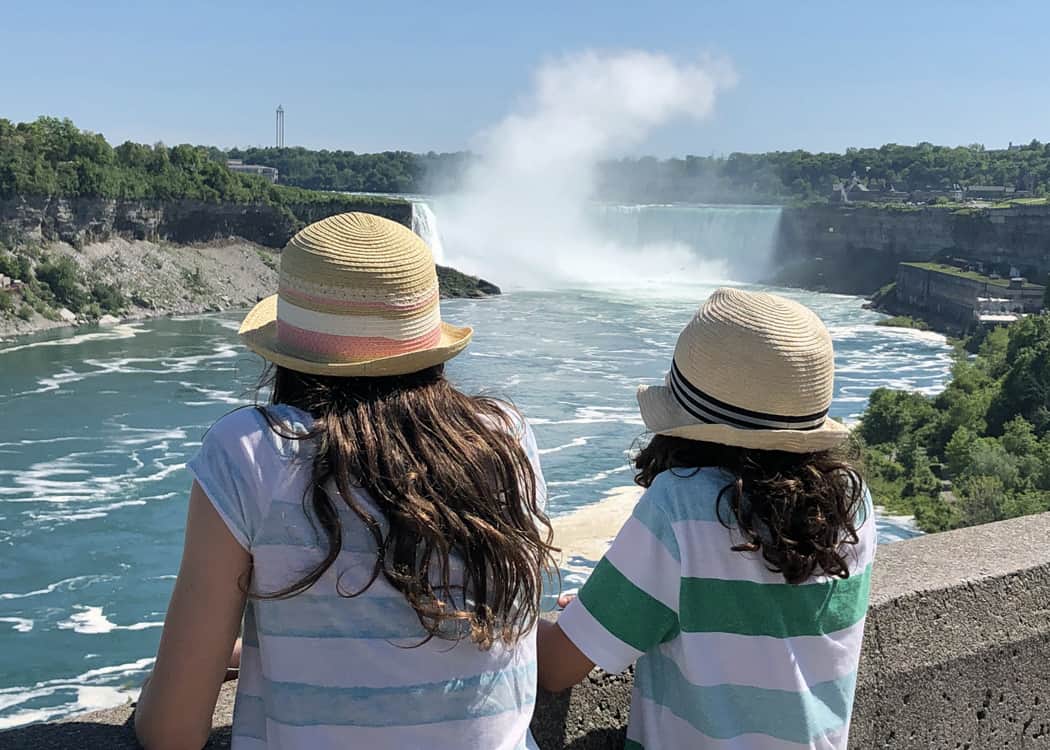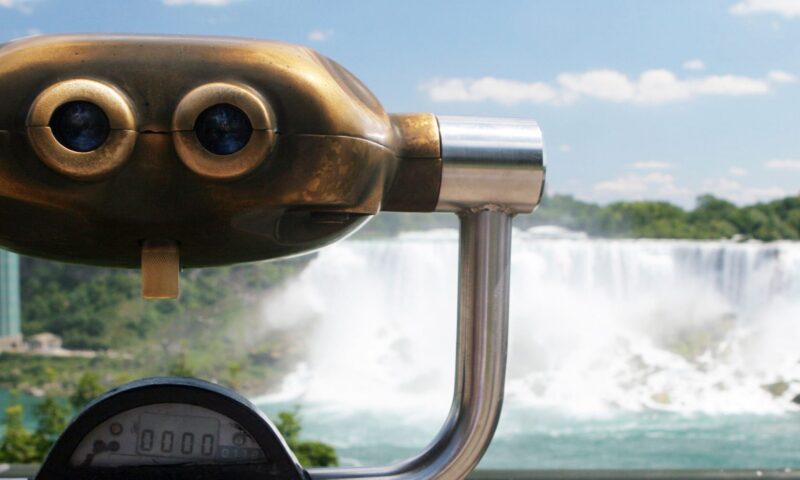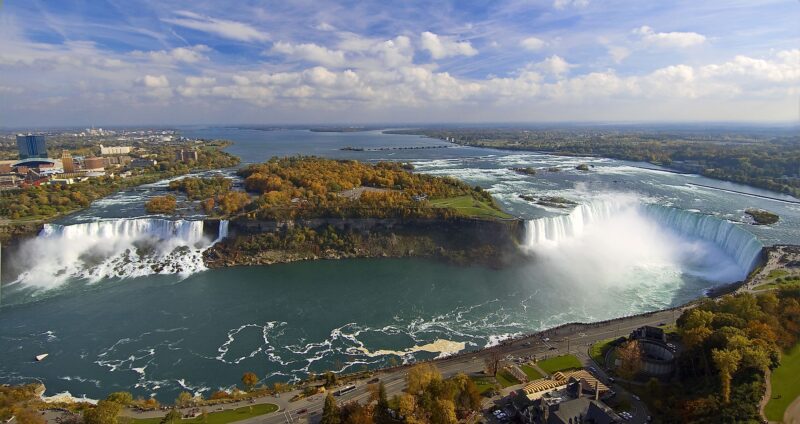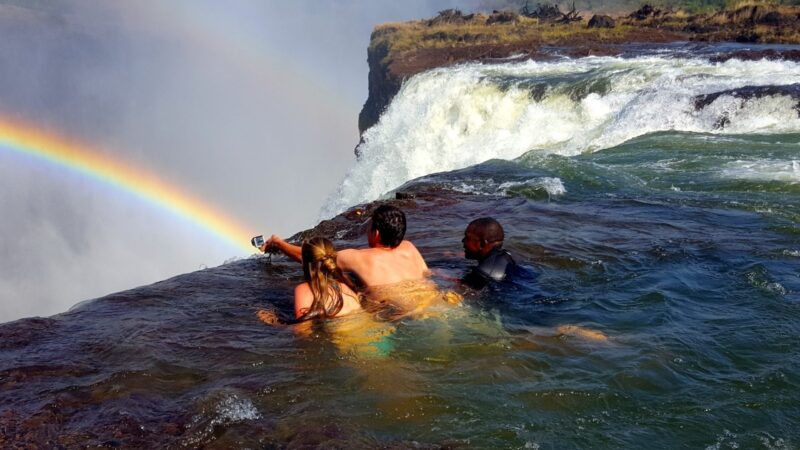The Niagara River is as famous as the falls and many people who love summer activities wonder if they can go take a swim in this river. While the thundering allure of Niagara Falls might tempt you to take a dip, safety first! This guide dives deep into why swimming in the river is a no-go, but don’t worry, we haven’t left you high and dry.
Instead, we’ll unveil the best alternative ways to experience the Falls’ grandeur, from breathtaking viewpoints to exhilarating tours. So, trade the swimsuit for comfortable shoes and prepare for an unforgettable Niagara adventure! Keep on reading to find out what the best tips are for visitors who want to enjoy these miracles of nature.
What Do You Need to Know About Safety When It Comes to Swimming in This River?
The Niagara River, a spectacle of nature’s power that connects Lake Erie to Lake Ontario, offers breathtaking views and serves as the source of the iconic Niagara Falls.
While the rivers and falls draw millions of visitors each year, attracted by their beauty and the thrill of witnessing such raw natural power, the question of safety, particularly regarding swimming, often arises. The Niagara River’s strong currents and the sheer volume of water cascading over the falls present significant risks.
In essence, swimming in the Niagara River, especially near the falls, is not safe and is strictly prohibited by law. The river’s currents can be deceiving, with calm surface conditions hiding dangerous undercurrents that can overpower even the strongest swimmers.
What Are the Safer Alternatives?

For visitors looking to experience Niagara beyond its scenic vistas, numerous tours offer safe and immersive ways to enjoy the river and fall. Boat tours like the Maid of the Mist in the United States and Hornblower Niagara Cruises in Canada allow guests to feel the mist on their faces and hear the thunderous roar of the falls up close, all within the safety of specially designed boats.
For those seeking a more adrenaline-fueled perspective, helicopter tours provide breathtaking aerial views of the Niagara River and Falls, showcasing their majesty from a unique vantage point. As you can see on fallstour.com, these tours are conducted with the highest safety standards, ensuring visitors can experience the thrill of Niagara without the risks associated with river swimming.
What Do You Need to Know About the Hidden and Visible Dangers?
The Niagara River’s beauty masks potential dangers that are critical for every visitor to understand. Beyond its swift currents, the river features sudden drop-offs and whirlpools, particularly in the gorge downstream of the falls.
The Niagara Whirlpool, a natural whirlpool along the river, is a testament to the water’s power, capable of trapping objects (and potentially swimmers) in its circular current.
Additionally, the river’s temperature, particularly outside of summer months, can induce cold shock and hypothermia rapidly. These conditions make swimming in the Niagara River extremely hazardous, underscoring the importance of adhering to safety warnings and regulations put in place to protect visitors.
What Are the Regulations and Precautions That You Need to Be Aware Of?

The areas around the Niagara River are well-regulated, with clear signage and barriers to prevent accidents. Local authorities and park services have established strict guidelines prohibiting swimming in the river, especially near the falls. These regulations are for the safety of the public, given the unpredictable and dangerous nature of the water.
Visitors are encouraged to enjoy the water’s beauty from designated lookout points and platforms, which are designed to offer spectacular views while ensuring the safety of all guests. Adherence to these rules is not just about personal safety; it also respects the natural habitat and the local efforts to preserve this magnificent natural wonder for future generations.
What Are Some Safe Water Activities You Can Opt For?
For those looking to experience water-based activities near Niagara Falls, there are safer alternatives to swimming in the river. The region offers several public pools and water parks that provide aquatic fun for families and visitors. Kayaking and canoeing are available in calmer sections of the river, far from the falls, where operators ensure a safe environment for paddlers.
Fishing is another popular activity, with specific areas designated for anglers to enjoy the river’s rich aquatic life, away from the dangerous currents near the falls. These activities allow visitors to engage with the water in a manner that is both safe and enjoyable.
Don’t Forget to Respect Nature’s Boundaries

The Niagara River, with its swift currents and dramatic falls, serves as a powerful reminder of nature’s boundaries. Visitors should heed the physical barriers and warning signs placed around the river and falls, designed to protect both the natural environment and the individuals who come to marvel at it.
Venturing beyond these boundaries can have severe consequences, not just for the individual involved but also for the rescue personnel who risk their lives in response.
The respect for these natural boundaries goes beyond personal safety; it’s about preserving the integrity and beauty of Niagara for everyone to enjoy. By observing these limits, visitors ensure that the river and falls continue to be a source of awe and inspiration for generations to come.
Why Do You Need to Raise Awareness About the Safety and Dangers of Niagara?
Education plays a crucial role in ensuring the safety of visitors to the Niagara River and Falls. Awareness campaigns by local tourism boards and park services aim to inform guests about the river’s dangers and the importance of observing safety guidelines.
Knowledgeable tour guides and informational signage throughout the area provide valuable insights into the river’s ecology, geology, and history, enhancing the visitor experience while promoting a culture of safety. By understanding both the beauty and the risks of the Niagara River, visitors can fully appreciate this natural wonder responsibly and safely.
The Niagara River and Falls are a testament to the awe-inspiring beauty of the natural world, inviting exploration and admiration. However, the power that makes the river and falls so spectacular also poses significant risks to those who venture too close.
By respecting the natural forces at play, adhering to established safety guidelines, and choosing safer, regulated ways to experience the river, visitors can enjoy all that Niagara has to offer without compromising their safety.
The Niagara region is equipped with numerous opportunities to safely engage with its waters, ensuring that the experience of visiting one of the world’s most renowned natural attractions remains both memorable and secure.
